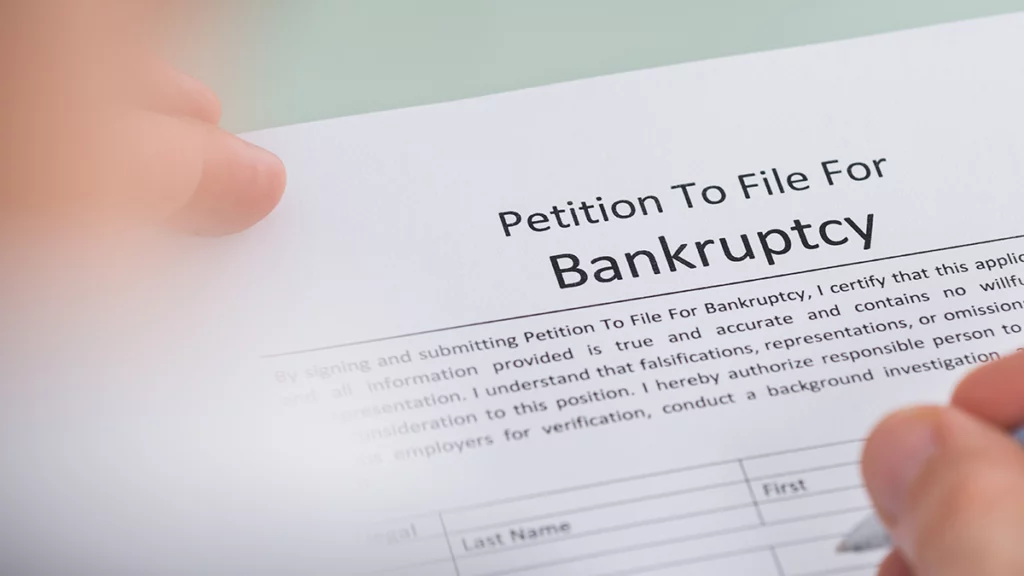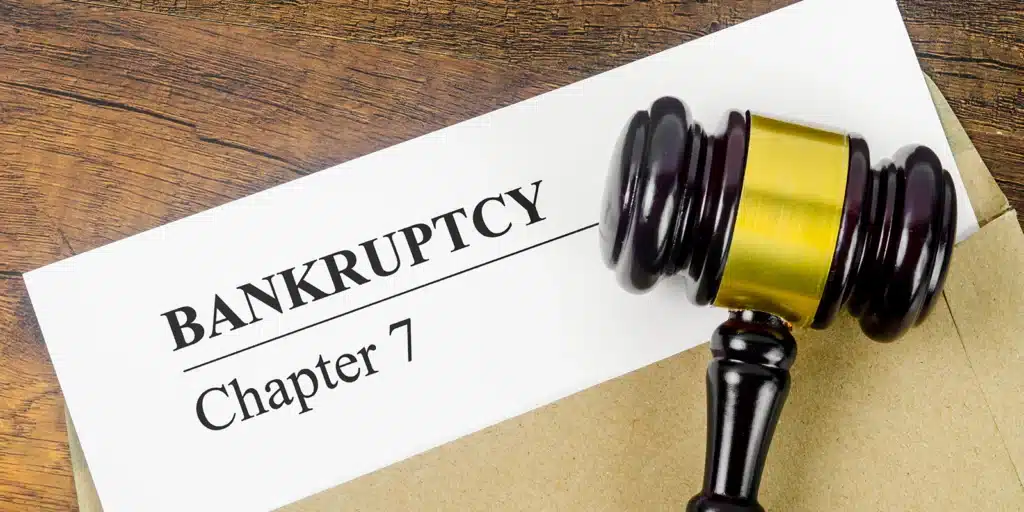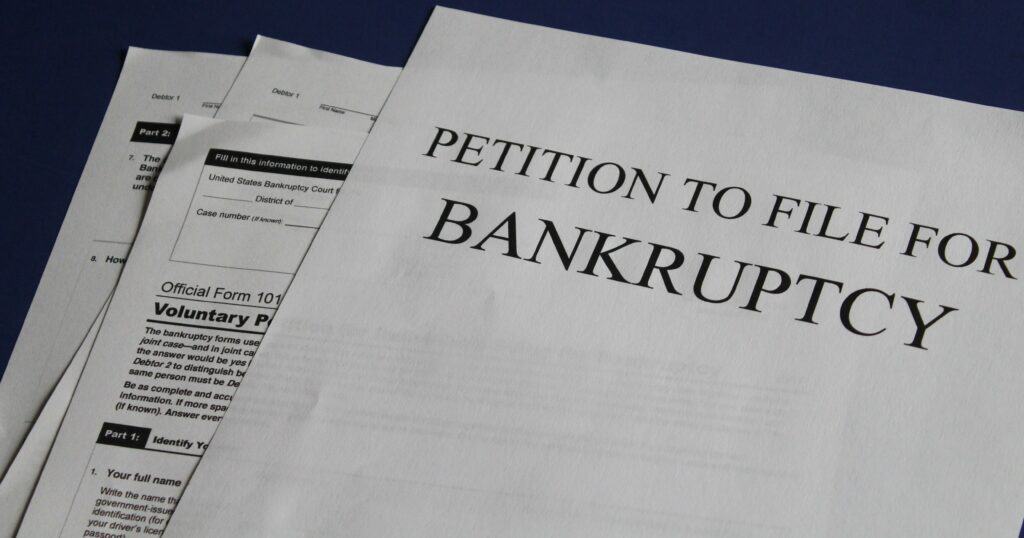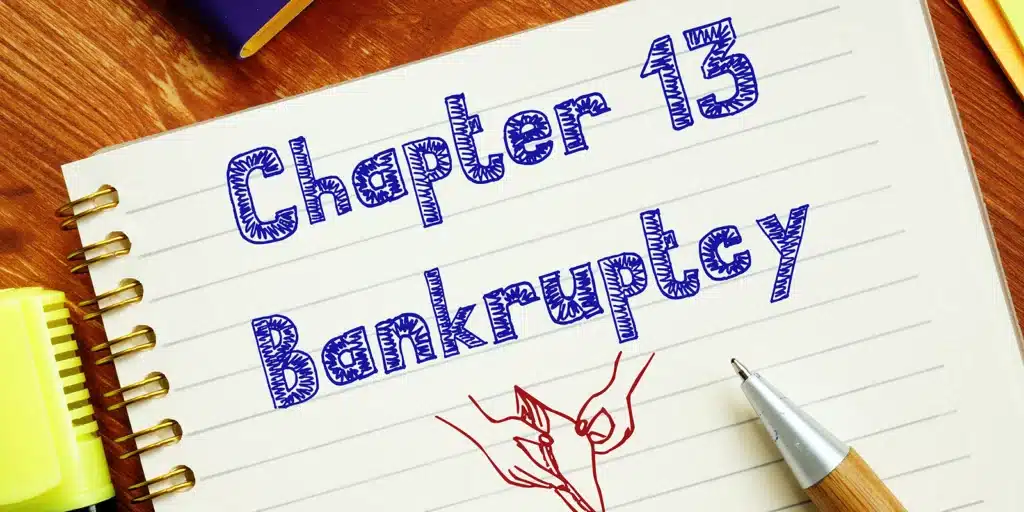Cheapest Ways to File Bankruptcy
Posted on December 22, 2022 in Debt
Filing for bankruptcy is the ultimate step in acknowledging that you can’t free yourself from a never-ending debt cycle. However, this thought might be scary when you think of the complexities of filing for bankruptcy, not to mention the attorney fees involved. With that concern in mind, we set out to detail the cheapest ways to file bankruptcy in order to help people break free from debt.
Table of contents
But it shouldn’t be so. You see, the law provides cheaper ways of filing for bankruptcy. This is by offering waivers and forgoing the attorney fees by going the DIY route.
This article will show you the costs you can avoid when filing for bankruptcy. But first, how do you know you need to file for bankruptcy? And what does the bankruptcy process entail?

Am I Eligible To File For Bankruptcy?
Filing for bankruptcy isn’t necessary for everyone in debt. There are considerations you should make before filing for bankruptcy, and we recommend you seek legal advice or a free consultation before making any final decisions. To help gauge if you should file for bankruptcy, take into consideration the following three questions:
Can you meet all your essential needs?
If you can’t meet all your basic needs- food, housing, and clothes- and still pay off your debt, then filing for bankruptcy is the way to go.
Can you liquidate some of your assets?
If yes, it’s better to liquidate some of your assets to pay off the debt instead of filing for bankruptcy. You see, filing for bankruptcy will stay in your credit history for 7 to 10 years and can affect your prospects of getting a loan.
Is your creditor suing, or is your house foreclosing?
If your creditor is suing you or your home is on the brink of foreclosure, then filing for bankruptcy can stop these processes. If you do it correctly, you’ll get to keep your house and any other personal assets.
Once you’ve decided to file for bankruptcy, you should be aware of the charges associated with it. They range from $500 to $7,000. These charges include the following;
- Attorney fees at around $500 to $3,500
- Court fees can be $0 to an excess of $100
- Credit counseling fees are between $20 to $100
- Bankruptcy filing fees from $400 to $3,500
- Miscellaneous costs, including paperwork costs and the charges of mailing your trustees the documents
Finding the best way of filing for bankruptcy makes all the difference to your already cash-strapped self. It gives you a fresh start to a life free from debt since the automatic stay will protect you. It prohibits debtors from collecting and securing you from wage garnishment.
So, let’s understand the cheapest types of bankruptcies you can file.
Types of Bankruptcies and Which is Cheapest to File
You must understand the two types of bankruptcies you can file as an individual. They include;
- Chapter 7 bankruptcy
- Chapter 13 bankruptcy
Here are the key differences between chapter 7 and chapter 13 bankruptcy to help best understand how they might suite your unique financial situation.
Chapter 7 bankruptcy and how to cut cost
Chapter 7 bankruptcy is the cheapest way of getting debt relief. It can take around six months to get done with it, and the charges can range from $400 to $2,500. Additionally, if done correctly, you can keep some of your assets through the automatic stay. You’re also eligible for waivers for some of the fees associated with chapter 7 bankruptcy as long as you meet the eligibility criteria.

However, it’s not as straightforward as you might think. If you’re not keen on the procedures associated with chapter 7 bankruptcies, you might end up paying extra fees in court, and your assets will pay off your debt.
Your income must be less than your state’s median income to qualify for a chapter 7 bankruptcy. If so, you can kick start the following steps of filing your chapter 7 bankruptcy.

Steps of filing chapter 7 bankruptcy
You should be familiar with your federal court’s outline of presenting the following documentation. This will improve your success rate in court. The steps of filing chapter 7 include;
- Get copies of your financial documents, including credit reports, your past two years’ tax returns, proof of income for the past six months, and any other document related to your income, debts, and assets.
- You should have a credit counseling certificate. You can get one by attending a credit counseling class from an approved credit counseling agency. You should start this class 6 months before filing for chapter 7 bankruptcy. The cost associated with the course is from $10 to $50. A waiver is applicable if you’ve got a household income that’s 150% below the federal poverty line
- Fill in the chapter 7 bankruptcy forms. You can access them online.
- Have your filing fees with you. They’re usually $338, which you can pay at once. If that’s not possible, you should apply to pay them in installments of up to 4 months or apply for a waiver if your income is below 150% of the federal poverty line.
- Print and sign all the forms associated with chapter 7 bankruptcy on single-sided papers for the court to accept. Before submitting them, reach out to your local bankruptcy court to confirm the number of copies needed and that you have all the required documents.
- Go to court and file your bankruptcy forms. Note that your bank statement and tax return forms won’t be required in court but by your trustees. Once you file your forms, you’ll get your bankruptcy case number, trustee name, time, and place for your 341 meetings (meeting your trustees).
- You should satisfy all the requirements mailed by your trustees to get off the hook of your debts. It includes submitting your bank statements, tax returns, and pay stubs.
- Afterward, you must complete a Debtor Education Course from an accredited counseling agency and file your certificate of completion with the court to be free of debt. You can check if you’re eligible for a waiver of the $10 to $50 fee associated with it.
- Go to your 341 meetings. Remember to carry your government-issued ID and social security card with you for verification and any other document specified by your trustees, including your bankruptcy forms and recent bank statements.
Apart from giving you a clean slate from debt, chapter 7 bankruptcy steps will also determine the assets that don’t qualify for the automatic stay. These assets will be auctioned to pay off your creditors.
Chapter 13 bankruptcy and managing its cost
Chapter 13 bankruptcy is complex compared to chapter 7. The charges associated with it can accumulate to $5,000, with the filing fee being $313. Contrary to chapter 7, you can’t apply for a waiver for chapter 13.
You should also note that chapter 13 bankruptcies can drag two to five years in court before it’s complete, often times adding to the already higher cost compared to chapter 7 bankruptcy. This is because you’ll be required to make monthly installments toward settling your debt within that period. A means testing analysis determines the amount you’ll pay in installments. You’ll be discharged of any outstanding debt after five years.

The only similarity chapter 13 has to chapter 7 is that you require a credit counseling course and a debtor education course. Also, you can protect some of your assets, including your;
- Primary home
- Social security benefits
- Vehicles you own
- Retirement accounts
It’s worth noting that the debts you’ll be exempted from in chapters 7 and 13 are unsecured. The non-dischargeable debts include the following;
- Student loans
- Child support fees
- Mortgages and auto loans
- Alimony
- Forgone government fees and tax debts.
With the two bankruptcies chapters explained, how can you file for bankruptcy in the cheapest way?
5 Cost Effective Ways You Can File For Bankruptcy
There are many options for filing a low cost bankruptcy. They include:
- Hiring an attorney
- DIY bankruptcy filing
- Going for a Legal Clinic
- Visiting a Legal Aid Society
- Asking for Pro Bono Legal Services
What separates them is the time they’ll take, associated requirements and expenses, and the success rate of your case in court. So, if you’re wondering, “where is the cheapest place to file for bankruptcy?” take a look below at our top 5 cheapest options.
1. Hiring an attorney
The success rate of your bankruptcy case in court improves when you hire a bankruptcy lawyer, making it the number one recommended cheapest way to file for bankruptcy. These lawyers understand the technical jargon of a bankruptcy court and can help you navigate through the filing process and application of waivers. As much as bankruptcy lawyers benefit your case, they don’t come cheap. Their charges vary depending on the chapter of bankruptcy you’ve filed. Let’s get a look at their figures.
Chapter 7 bankruptcy attorney fees
The average attorney fees for chapter 7 bankruptcy are $1,500. To be safe, set aside $1,000 to $3,000 for your attorney. This is because different attorneys charge differently depending on the;
- Place of residence
- The complexity of your case
- Their expertise as bankruptcy lawyers
The success rate of chapter 7 cases with an attorney is 99%, while without is 67%.
Chapter 13 bankruptcy attorney fees
Filing chapter 13 is a complex affair. You’re likely to fail without an attorney, as backed up by 98% of consumers who failed to do it alone. Because of its complexities, lawyers will charge you a high price ranging from $3,000 to upwards of $5,000.
This type of bankruptcy filing is suitable if;
- You’ve got high-interest loans
- Have several houses
- You’re behind on your mortgage
It will help you negotiate a better repayment plan while keeping your assets.
You can also pay attorney fees through a repayment plan that allows you to make an initial deposit and finish the rest of the charges in monthly payments. So, what happens if you can’t afford a lawyer for either of the chapters?
2. Look out for a Legal Aid Society
The second cheapest way to file for bankruptcy that we recommend is seeking out a local legal aid society. They are non-profit law firm organizations championing your financial rights. They know bankruptcy code, understand the best payment plan options, and provide overall legal aid for your situation.
3. Go for a Legal Clinic
You’ll get advice on sound financial management, bankruptcy laws, and how to file for bankruptcy.
4. Ask for Pro Bono Legal Services
Pro bono services are the lowest cost option to file for bankruptcy. With pro bono bankruptcy services, you’ll get an attorney presentation in court for free. However, you’ll have to deal with paralegals most of the time.
5. DIY Bankruptcy
By Doing It Yourself, you’ll save most of the cost of filing for bankruptcy. It’s a tricky situation but actionable when need be.
It’s much simpler to Do It Yourself (DIY) when you don’t have;
- A personal business
- A car or home loan
- Non-dischargeable debts
- Personal assets except for your basic needs
Final Thoughts on How to Affordably File for Bankruptcy
As discussed in the article, filing for bankruptcy doesn’t have to be expensive if you decide to file for chapter 7 bankruptcy. It offers different ways to minimize the cost of filing for bankruptcy through fee waiver applications. Also, its success rate isn’t alarming when you decide to DIY, provided your case isn’t complex.
Otherwise, if have no money are looking for the absolute cheapest ways to file for bankruptcy, consider a Legal Aid Society or Legal Clinic or ask for Pro Bono Services. If you’re in a tight financial spot, also remember to go for the installments option if you’re filing chapter 13. This will help you in managing your finances, and getting back to a position where you can start to build wealth.
Related Resources:
Related blog posts
Need expert financial advice?
Let TurboFinance connect you with the best consulting services and resources to help you take control of your finances and find a path to build wealth.
Get A Free Consultation Today!